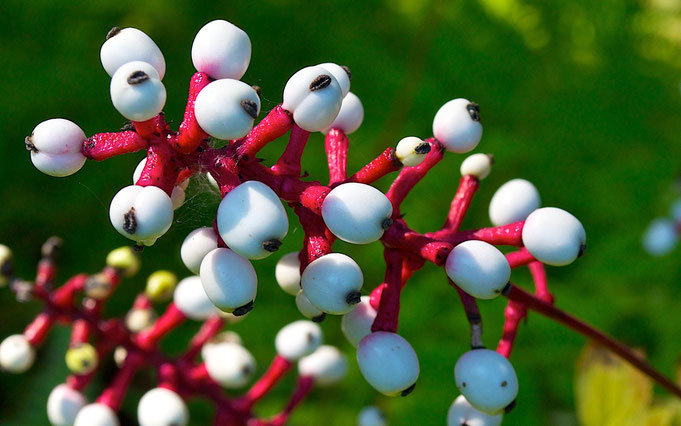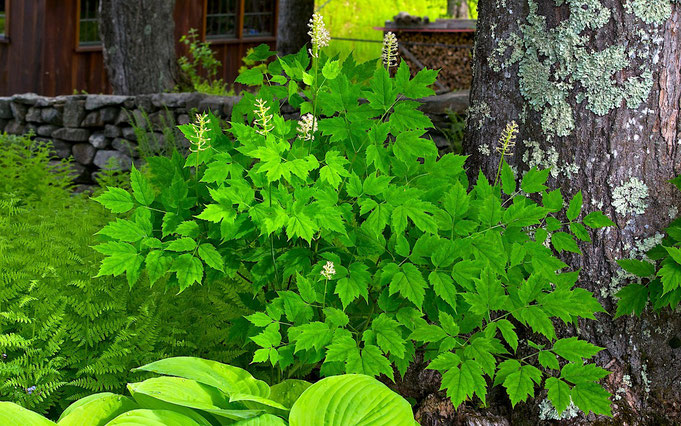Its Tea Time

All parts of the
(Actaea pachypoda) plant are considered poisonous to humans. But, according to Wikipedia, both Native Americans and settlers made tea out of the roots for relieving pain of childbirth. The early colonists also used the plant to improve circulation and to cure headache or eyestrain. This plant is sometimes called Dolls Eyes because the white fruits resemble the china eyes once used in dolls.

In cultivation White Baneberry requires part to full shade, rich loamy soil, and regular water with good drainage to reproduce its native habitat. We have had good luck transplanting Doll's Eyes from the forest to the gardens of Distant Hill. Come late summer, the flowers will transform themselves into the large white berries shown above.

